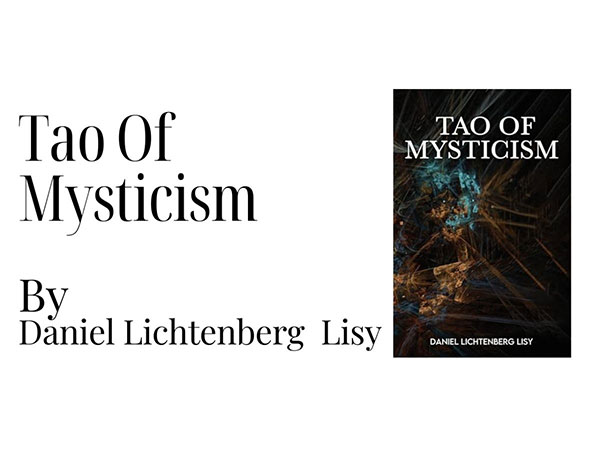
| Source: Research and Markets
Dublin, Jan. 03, 2025 (GLOBE NEWSWIRE) — The “Spiritual Jewelry Market Report 2024” report has been added to ResearchAndMarkets.com’s offering.
This Spiritual Jewelry market report covers market characteristics, size and growth, segmentation, regional and country breakdowns, competitive landscape, market shares, trends and strategies for this market. It traces the market’s historic and forecast market growth by geography.

The spiritual jewelry market size has grown strongly in recent years. It will grow from $13.77 billion in 2023 to $14.78 billion in 2024 at a compound annual growth rate (CAGR) of 7.3%. The spiritual jewelry market size is expected to see strong growth in the next few years. It will grow to $19.69 billion in 2028 at a compound annual growth rate (CAGR) of 7.4%.
The growth observed during the historic period can be attributed to several factors, including an increase in people seeking spiritual practices, heightened interest and sales in spiritual jewelry, a rise in fashion pieces and luxury jewelry production, greater awareness about spirituality, and an increase in consumer disposable income.
The projected growth during the forecast period can be attributed to several factors, including a continued increase in people seeking spiritual practices, rising spending on gems and jewelry, growing demand for spiritual jewelry, a greater perception of these items as investments, and an increasing affinity for rings. Key trends expected during this period include technological development, digital transformation and expansion of e-commerce, sustainability and ethical sourcing practices, and a focus on customization and personalized products.
An increase in focus on spirituality is anticipated to drive significant growth in the spiritual jewelry market. Spirituality involves the pursuit of a deeper understanding of existence and a sense of connection to something greater than oneself, often through practices such as meditation, prayer, and contemplation. The rising emphasis on spirituality is driven by the search for deeper meaning, the pursuit of mental well-being, dissatisfaction with organized religion, and broader cultural shifts.
Spiritual jewelry supports this pursuit by serving as a reminder of personal beliefs, setting intentions, promoting balance, expressing faith, offering protection, and encouraging mindfulness. For example, a January 2023 survey conducted by Barna Group, a US-based evangelical Christian polling firm, revealed that 74% of 2,000 U.S. adults surveyed in October 2022 expressed a desire for spiritual growth, while 77% reported belief in a higher power. This increased focus on spirituality is expected to boost the growth of the spiritual jewelry market.
The expansion of e-commerce platforms is also set to drive growth in the spiritual jewelry market. E-commerce platforms involve the buying and selling of goods and services over the internet through websites or mobile apps, offering the convenience of shopping from home, a wider product selection, and competitive pricing. These platforms enable spiritual jewelry to reach a global audience, showcase diverse designs, and provide detailed product information, making it easier for consumers to find meaningful pieces. This growth in e-commerce is driving the expansion of the spiritual jewelry market.
Leading companies in the spiritual jewelry market are offering high-end jewelry collections to meet the growing demand for unique and meaningful adornments. These spirit-high jewelry collections feature luxurious, intricately designed pieces that incorporate spiritual motifs and symbols, combining aesthetic appeal with deeper spiritual significance.
Asia-Pacific was the Iargest region in the spiritual jewelry market in 2023, and is expected to be the fastest-growing region in the forecast period. The regions covered in the spiritual jewelry market report are Asia-Pacific, Western Europe, Eastern Europe, North America, South America, Middle East, Africa. The countries covered in the spiritual jewelry market report are Australia, Brazil, China, France, Germany, India, Indonesia, Japan, Russia, South Korea, UK, USA, Canada, Italy, Spain.
Some of the major companies profiled in this Spiritual Jewelry market report include:
Key Attributes:
Key Topics Covered:
1. Executive Summary
2. Spiritual Jewelry Market Characteristics
3. Spiritual Jewelry Market Trends and Strategies
4. Spiritual Jewelry Market – Macro Economic Scenario
4.1. Impact of High Inflation on the Market
4.2. Ukraine-Russia War Impact on the Market
4.3. COVID-19 Impact on the Market
5. Global Spiritual Jewelry Market Size and Growth
5.1. Global Spiritual Jewelry Market Drivers and Restraints
5.1.1. Drivers of the Market
5.1.2. Restraints of the Market
5.2. Global Spiritual Jewelry Historic Market Size and Growth, 2018 – 2023, Value ($ Billion)
5.3. Global Spiritual Jewelry Forecast Market Size and Growth, 2023 – 2028, 2033F, Value ($ Billion)
6. Spiritual Jewelry Market Segmentation
6.1. Global Spiritual Jewelry Market, Segmentation by Product Type, Historic and Forecast, 2018-2023, 2023-2028F, 2033F, $ Billion
6.2. Global Spiritual Jewelry Market, Segmentation by Material, Historic and Forecast, 2018-2023, 2023-2028F, 2033F, $ Billion
6.3. Global Spiritual Jewelry Market, Segmentation by Gemstone, Historic and Forecast, 2018-2023, 2023-2028F, 2033F, $ Billion
6.4. Global Spiritual Jewelry Market, Segmentation by Distribution Channel, Historic and Forecast, 2018-2023, 2023-2028F, 2033F, $ Billion
6.5. Global Spiritual Jewelry Market, Segmentation by End-User, Historic and Forecast, 2018-2023, 2023-2028F, 2033F, $ Billion
7. Spiritual Jewelry Market Regional and Country Analysis
7.1. Global Spiritual Jewelry Market, Split by Region, Historic and Forecast, 2018-2023, 2023-2028F, 2033F, $ Billion
7.2. Global Spiritual Jewelry Market, Split by Country, Historic and Forecast, 2018-2023, 2023-2028F, 2033F, $ Billion
For more information about this report visit https://www.researchandmarkets.com/r/3u89o4
About ResearchAndMarkets.com
ResearchAndMarkets.com is the world’s leading source for international market research reports and market data. We provide you with the latest data on international and regional markets, key industries, the top companies, new products and the latest trends.
Attachment









